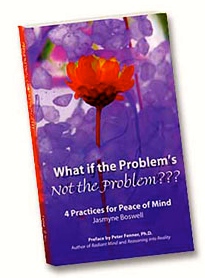Enticing Readers
Writing a catchy introduction or “hook” often eludes even the most proficient writers. The first few lines of any piece of writing are essential because they set the tone and make the reader want to read on. A good opening line should leave the reader asking a question. This question should invite the reader to keep reading.
OPEN YOUR BOOK WITH A HOOK
by Barbara Dawson Smith
Think of your opening scene as the catalyst that triggers the chain of events in your story. Your first page starts the ball rolling. The best books grab the reader from the very first sentence and never let go.
Begin your novel by showing a character with a problem doing something interesting. On page one, your main protagonist should be acting in a way that both characterizes him/her and sets the plot in motion. Your opening can be anything from a cowboy in a gunfight to a girl being followed on a dark London street. It can be a character cooking dinner or committing murder.
Your main objective is to entice the reader into buying the book. A poetic description of a sunrise won’t work. It’s boring because no character is involved. Novels are about people, not lovely scenery!
So start with something intriguing. How could you resist reading any of the following stories?
THE ENDEARMENT by LaVyrle Spencer: Anna Reardon had done the unforgivable. She had lied through her teeth to get Karl Lindstrom to marry her.
Lied? What did she tell him? Will she get caught? When is Karl going to find out? Not only does this situation grab our attention, it also characterizes the heroine. “Unforgivable” hints that she’s an honorable person in a desperate situation. It raises the question of why she feels forced into this marriage. So Anna gets our sympathy immediately. She sounds like someone we’d like to read about. We’re hooked!
THE LIGHTKEEPER by Susan Wiggs: On Sunday, something washed up on shore.
Again, this piques our curiosity. Something? What? Why is it significant? Indeed, as we read on, we find out the hero is the lightkeeper at an isolated lighthouse in the Pacific Northwest, and what he sees wash up on shore is a half-dead, pregnant woman covered in seaweed. Quickly, our sympathies are engaged and we want to find out who she is and why she was in the water.
HOT ICE by Nora Roberts: He was running for his life. And it wasn’t the first time.
Here, we have a character in a life-or-death situation, a character with a blase attitude toward danger. We want to know who he is, why he’s running, and if he’ll get away.
HER SECRET AFFAIR by Barbara Dawson Smith: He would teach her a lesson she would never forget.
Will he? What sort of lesson? Why does he think she deserves to be taught a lesson? In addition, there’s something menacing about his statement, and so we sense an exciting conflict to come.
NOBODY’S BABY BUT MINE by Susan Elizabeth Phillips: “Let me get this straight,” Jodie Pulanski said. “You want to give Cal Bonner a woman for a birthday present.”
This opening sets the light-hearted tone of the book. And it begins in the middle of the action that propels the whole story. Cal Bonner is the hero and the woman he gets as a birthday present turns out to be the heroine. We’re intrigued from the very beginning.
Perhaps you picked out the common thread in all of these opening hooks: change. The character is on the verge of change in his existing situation. Something has happened or is about to happen that will cause dramatic consequences in the life of the character. Your goal should be to arouse curiosity in the reader so that the browser who picks up your book in a store and scans the first page simply must know what this character is doing and why.
Remember, your first reader is the editor, and a busy editor might scan only the first few pages of your book. If you haven’t grabbed her by then, you’re sunk. You’ve lost a sale–even if you think the scene on page thirty is better than anything Judith McNaught or Nora Roberts ever wrote! The editor might not get that far.
So make page one compelling. Use emotion to tug at the reader’s heartstrings. Use action to take her breath away. Introduce a character who leaps off the page. Stir questions in the mind of the reader and make her turn the pages to discover what will happen next.
Enjoy!

Blog Coaching Miscellaneous themes Tips for Writing A Book Transformational Coaching
Enticing Readers


